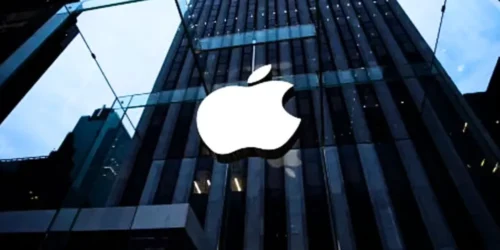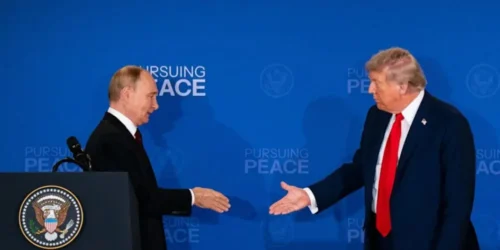It is the oldest, most lucrative, and most controversial business in any capital city. It is a profession shrouded in caricature and myth. We picture smoke-filled backrooms, shadowy figures with suitcases of cash, and secret deals scribbled on cocktail napkins. We imagine a world of overt bribery and cartoonish villainy.
The reality of modern political lobbying is, for the most part, something far more sophisticated, far more pervasive, and far more legal. It is a multi-billion-dollar industry of influence, a vast and complex ecosystem dedicated to a single, relentless purpose: to shape the laws of the land to benefit a specific interest. It is not always about stopping a bill; it is often about inserting a single, favorable clause. It is not always about a dramatic public battle; it is often about a quiet, technical conversation with a low-level regulator.
This is a case study of that invisible handshake. We will journey into the heart of the “influence industry,” dissecting its methods, its players, and its profound, often corrosive, impact on the democratic process. We will not just rail against the evils of “big money” in politics. Instead, we will explore the intricate machinery of modern lobbying, using the decades-long, stunningly successful campaign by the American pharmaceutical industry as our primary lens. The story of “Big Pharma’s” ability to shape its own regulatory and pricing environment is a masterclass in the art of influence.
This is a story about how power works, not in the civics class textbook, but in the marbled corridors of Washington D.C., Brussels, and every other seat of government. It is a story of access, of information, of meticulously cultivated relationships, and of the quiet, relentless pressure that can bend the arc of public policy away from the public good and toward a private interest. It is a battle for the very soul of representative government.
The Anatomy of Influence – Beyond the Suitcase of Cash
To understand the modern lobbying industry, we must first discard the simplistic notion that it is all about illegal bribery. While bribery certainly exists, it is the crudest and riskiest tool in the lobbyist’s toolkit. The real work of influence is a far more subtle and multifaceted game. The industry is a sophisticated machine with several key, interlocking components.
The Players: An Army of Insiders
The foot soldiers of this industry are the lobbyists themselves. And they are not who you might think. The most effective lobbyists are not slick salesmen; they are former insiders. This is the infamous “revolving door” of the capital city.
- Former Members of Congress/Parliament: A retiring senator or congressman is the ultimate prize for a lobbying firm. They walk out of public service on a Friday and into a seven-figure lobbying job on a Monday. They bring with them not just a deep, technical knowledge of the legislative process, but something far more valuable: their relationships. They can pick up the phone and get a meeting with their former colleagues, the very people now writing the laws that affect their new corporate clients.
- Former Staffers: Even more numerous and often more effective are the former chiefs of staff, legislative directors, and committee aides who flood into the lobbying world. These are the people who wrote the laws. They know the arcane rules of procedure, they know which subcommittee has jurisdiction, and they have deep, trusted relationships with the current staffers who are doing the work.
- Technical Experts: Lobbying firms also hire former regulators, scientists, and lawyers from the very government agencies they now seek to influence. An oil and gas lobby hires a former official from the Environmental Protection Agency (EPA) to help them navigate and weaken environmental regulations.
Two main types of organizations deploy this army of insiders:
- Trade Associations: These are the big industry-wide groups, like the Chamber of Commerce, the American Petroleum Institute, or our case study’s subject, the Pharmaceutical Research and Manufacturers of America (PhRMA). They represent the collective interests of an entire sector.
- Contract Lobbying Firms (K Street): These are the “hired guns,” the law firms and public affairs shops on Washington’s K Street that represent individual corporations or interests for a hefty monthly retainer.
The Tools of the Trade: A Multi-Front War
A successful lobbying campaign is not a single action; it is a multi-front war, waged over years, using a sophisticated array of tools.
- Access and Relationships (The “Shoe-Leather” Lobbying): This is the heart of the game. The core job of a lobbyist is to build and maintain personal relationships with policymakers and their staff. It is a world of endless coffee meetings, fundraising dinners, and informal chats. The goal is not to offer a bribe, but to become a trusted, reliable source of information. When a staffer is drafting a complex piece of healthcare legislation, the friendly, helpful PhRMA lobbyist they’ve known for years is the first person they call for data and technical advice. Access is everything.
- Money as a Weapon: Campaign Finance: This is the most controversial tool. While direct bribery is illegal, financing a politician’s re-election campaign is perfectly legal. Large corporations and trade associations create Political Action Committees (PACs) that bundle donations from their employees and executives and contribute millions of dollars to the campaigns of key politicians. This is not a quid pro quo in the legal sense. No one says, “Vote for my bill, and I will give you $10,000.” The transaction is more subtle. The money ensures access. It signals who your friends are. A politician is far more likely to take a meeting with, and listen to the concerns of, an industry that has just maxed out its contributions to their campaign committee. It creates a system of gratitude and dependency.
- Information Warfare: Shaping the Narrative: Modern lobbying is as much about shaping the public and political environment as it is about influencing a specific vote. This involves a massive investment in what can be called “information warfare.”
- Think Tanks and Academic Funding: Industries will fund think tanks and academic studies that produce research favorable to their policy goals. This creates a veneer of independent, expert validation for their arguments.
- Astroturfing and Grassroots Lobbying: This is the practice of creating fake “grassroots” movements. An industry will create and fund a slickly named “citizens’ group” (e.g., “Americans for Affordable Energy”) that is designed to look like a spontaneous popular movement. This group will then run ads and mobilize “members” to contact their representatives, creating the illusion of widespread public support for the industry’s position.
- Public Relations and Advertising: This is the air war. Industries will spend millions on television and social media ads designed to frame the public debate on their terms, often using emotional, misleading, or fear-based messaging.
- The Legal and Regulatory Game: The War in the Weeds: Much of the most effective lobbying happens far from the glare of a congressional vote. It happens in the obscure, technical world of the regulatory process. After Congress passes a broad law, it is up to the executive branch agencies (like the EPA, the FDA, or the FCC) to write the specific rules and regulations that implement it. Lobbyists will flood these agencies with technical comments, legal challenges, and meetings with regulators, all designed to weaken the final rule, create loopholes, or delay its implementation for years. This is a grinding, unglamorous, but incredibly effective war of attrition.
This entire machine—the insiders, the money, the information, the legal challenges—creates a powerful, self-reinforcing system of influence. And no one has played this game more masterfully than the American pharmaceutical industry.
The Patient – Big Pharma and the Decades-Long Campaign for Power
The pharmaceutical industry presents itself to the world as a force for unalloyed good. It is an industry of brilliant scientists in white coats, dedicated to curing disease and alleviating human suffering. Its commercials are filled with images of smiling, healthy people living full lives, all thanks to the miracle of modern medicine.
This is a powerful and partially true narrative. The industry has produced life-saving drugs that have eradicated diseases and transformed the treatment of everything from cancer to HIV. But behind this narrative of noble innovation lies another, more complex story: the story of a political machine of unparalleled power and sophistication. This machine has successfully shaped the American healthcare system to ensure its own massive and enduring profitability.
The industry’s central political challenge has always been to reconcile two opposing forces: the immense public good created by its products and the immense private profits demanded by its shareholders. The decades-long lobbying campaign by PhRMA and its member companies has been a masterclass in navigating this tension. Their success can be understood as a series of major strategic victories, won over decades, on multiple fronts.
The Long Patent – Securing the Monopoly
The foundation of a pharmaceutical company’s profitability is the patent. A patent grants a company an exclusive, government-sanctioned monopoly to sell a new drug for a set period. During this period of exclusivity, the company can charge whatever price the market will bear, free from any generic competition. The goal for the industry has always been to make this monopoly period as long and as robust as possible.
Through years of relentless lobbying, the industry has achieved this in several ways:
- The Hatch-Waxman Act (1984): On the surface, this act was a compromise. It created the modern pathway for generic drugs to enter the market. But it also contained huge wins for the brand-name drug industry, including a provision that granted them an automatic extension on their patent life to compensate for the time a drug spent in the FDA approval process.
- The Art of “Evergreening”: The industry has become masterful at “evergreening”—making small, often trivial, changes to an existing drug just before its patent expires to win a new patent and extend its monopoly. They might change the coating on a pill, create a new extended-release version, or slightly alter the chemical formulation. Through a web of complex patent litigation and lobbying, they have found ways to keep generic competitors at bay for years after the original patent should have expired.
This victory ensures that their blockbuster drugs remain massive cash cows for as long as possible, a core objective of their political strategy.
The Ban on Negotiation – The Story of Medicare Part D
Perhaps the single greatest lobbying victory in the history of the pharmaceutical industry came in 2003 with the passage of the Medicare Modernization Act, which created the Medicare Part D prescription drug benefit for seniors.
This was a massive new government program, a multi-trillion-dollar firehose of public money directed at the pharmaceutical industry. But buried in the dense, complex text of the law was a single, astonishing clause that had been the subject of the most intense lobbying campaign Washington had ever seen. The clause explicitly prohibited the federal government—the largest single purchaser of prescription drugs in the world—from using its immense purchasing power to negotiate lower drug prices with the manufacturers.
Imagine a law that forced the Pentagon to pay full list price for every single fighter jet, with no ability to negotiate a bulk discount. That is what PhRMA achieved. They argued that allowing the government to negotiate prices would stifle innovation. They unleashed a multi-million-dollar ad campaign featuring seniors who were terrified of losing access to their medicines. They flooded Capitol Hill with lobbyists and campaign contributions.
The result was a bizarre and uniquely American system. Every other developed nation in the world has a government health system that negotiates drug prices. The U.S. government, thanks to this single clause, was legally forbidden from doing so. It was an act of state capture so blatant and so complete that it has been called the “greatest gift” Congress ever gave to a single industry. For the next two decades, it would ensure that Americans paid, by far, the highest prices for prescription drugs in the world.
The Flood of Advertising – Creating Demand
In most of the developed world, advertising prescription drugs directly to consumers is illegal. It is seen as a dangerous practice that can lead patients to demand expensive, and possibly unnecessary, medications from their doctors. In 1997, after another intense lobbying push, the FDA relaxed its rules, opening the floodgates for direct-to-consumer (DTC) advertising in the United States.
The effect was revolutionary. Our television screens and magazines were suddenly filled with ads for drugs treating everything from depression to erectile dysfunction to restless leg syndrome. These ads were not primarily educational; they were emotional. They sold a lifestyle, a promise of a better, happier, more active life. They always ended with the same powerful call to action: “Ask your doctor if [Brand Name Drug] is right for you.”
This created a powerful new dynamic. Patients, armed with information from a slick 60-second commercial, were now coming into doctors’ offices and demanding specific, expensive, brand-name drugs, even when a cheaper, equally effective generic might have been available. The industry was no longer just marketing to doctors; it was marketing directly to the end-user, creating a massive, consumer-driven demand for its most profitable products.
These three victories—long monopolies, a ban on price negotiation, and the right to advertise directly to consumers—created a perfect, self-reinforcing system of profitability. It was a system designed not by the free market, but meticulously constructed, piece by piece, over decades, in the corridors of Washington D.C. by the industry’s powerful political machine.
The Machinery in Motion – How a Lobbying Campaign Works
The victories of Big Pharma were not accidents. They were the result of a deliberate, long-term, and breathtakingly well-funded strategy. The industry’s lobbying machine is a case study in how to execute a multi-front campaign with ruthless efficiency.
The Ground Game: The Army on Capitol Hill
The pharmaceutical industry is consistently one of the top spenders on lobbying in Washington. In a typical year, PhRMA and its member companies will spend hundreds of millions of dollars and deploy an army of over 1,500 registered lobbyists. That is more than two lobbyists for every single member of Congress.
This army is a who’s who of the Washington establishment. It includes former congressional leaders from both parties, former White House officials, and legions of former staffers from the key committees that oversee healthcare policy.
Their daily work is a relentless grind of relationship-building. They are a constant presence in the halls of Congress, providing information, offering technical analysis, and making their case to the very people drafting the legislation. They are not just reacting to bills; they are often involved in writing them. A staffer working on a complex piece of patent law will often find that the PhRMA lobbyist can provide more detailed and faster information than the official Congressional Research Service. They make themselves indispensable.
The Air War: Manufacturing Consent
While the ground troops are fighting in the trenches of Capitol Hill, the industry wages a massive “air war” to shape public and political opinion.
- Patient Advocacy Groups: One of the industry’s most effective and controversial tactics is the funding of “patient advocacy groups.” Many of these groups, which present themselves as independent champions for patients with specific diseases, receive a significant portion of their funding from the very pharmaceutical companies that make the drugs for those diseases. These groups can then be mobilized to testify before Congress, to run ad campaigns, and to protest any policy—like price negotiation—that might threaten the industry’s profits. They provide a powerful, emotional, and seemingly independent “patient voice” that is, in reality, often echoing the industry’s talking points.
- Think Tank Patronage: PhRMA and its members are major funders of conservative and centrist think tanks. These organizations produce a steady stream of op-eds, policy papers, and “academic” studies that argue against government “price controls” and in favor of the industry’s “pro-innovation” agenda. This creates an intellectual echo chamber that reinforces the industry’s narrative.
- Emotional Advertising: The industry spends billions on issue advertising that has nothing to do with a specific product. These ads feature heartwarming stories of scientists working late in the lab, of breakthroughs, of hope. The message is simple and powerful: We are the innovators. Don’t do anything that might slow us down. This is not about selling a pill; it is about selling a political argument.
The Financial Underpinning: The Campaign Contribution Firehose
Underpinning this entire operation is a torrent of campaign cash. The pharmaceutical industry’s PACs are among the most prolific donors in American politics, giving money generously and strategically to members of both parties. They focus their contributions on the members of the key committees—the House Ways and Means Committee, the Senate Finance Committee—that write the laws governing their industry.
The money does not buy a specific vote. It buys something more valuable: access and gratitude. It ensures that when a bill threatening the industry’s interests is being considered, their phone calls will be answered, their meetings will be granted, and their arguments will be heard. It is the cost of having a permanent seat at the table.
This three-pronged assault—a massive ground game, a sophisticated air war, and a relentless firehose of cash—has made the pharmaceutical lobby one of the most feared and effective political forces in American history.
The Cracks in the Armor – A New Challenge to the Old Order
For decades, the pharmaceutical industry’s political fortress seemed impregnable. Bill after bill to allow Medicare to negotiate drug prices was introduced in Congress, only to die a quiet death under the immense weight of the industry’s lobbying machine.
But in recent years, a series of powerful forces have begun to create the first real cracks in that armor.
- The Power of Public Outrage: The stories were becoming impossible to ignore. The story of the EpiPen, a life-saving device for allergic reactions, whose price was jacked up by over 400%. The story of Martin Shkreli, the “pharma bro” who became a national villain for raising the price of a life-saving antiparasitic drug by 5,000%. The story of insulin, a century-old drug, whose price had skyrocketed, forcing people with diabetes to ration their doses. These stories moved the issue from the business pages to the front pages. They personalized the issue, turning it from an abstract policy debate into a kitchen-table crisis for millions of American families. Public anger at the industry reached a boiling point.
- A Shift in the Political Winds: This public outrage began to create a new political calculus. For politicians in both parties, defending the pharmaceutical industry was becoming increasingly toxic. The issue of high drug prices became a rare point of bipartisan agreement, with both President Donald Trump and his Democratic rivals campaigning on a promise to take on Big Pharma.
- The COVID-19 Pandemic: The pandemic was a double-edged sword for the industry. On one hand, the rapid development of mRNA vaccines by companies like Pfizer and Moderna was a stunning triumph, a powerful validation of their “innovation” narrative. On the other hand, the fact that much of the foundational research for these vaccines was funded by the government, combined with the massive profits these companies reaped, created a new level of public scrutiny. The argument that high prices were the necessary cost of innovation began to ring hollow when taxpayers had already funded so much of the initial risk.
This confluence of forces created a political opening that had not existed for a generation. The fortress, for the first time, looked vulnerable.
The Breaching of the Wall – The Inflation Reduction Act
The culmination of this new political reality came in the summer of 2022, with the passage of the Inflation Reduction Act (IRA). While the bill was a broad piece of climate and social spending legislation, it contained a set of provisions that represented the first significant defeat for the pharmaceutical lobby in decades.
After a bitter, drawn-out fight, the law finally gave Medicare the power to negotiate the prices of a small, select number of the most expensive prescription drugs. It was not the full, sweeping negotiation power that progressives had wanted. It was a compromise, full of limitations and delayed implementation schedules. But it was a breach in the wall.
The industry fought back with everything it had. They spent over $100 million on lobbying in the first half of 2022 alone. They unleashed a massive ad campaign, warning that the bill would lead to a “socialist price-setting” scheme that would destroy innovation and lead to fewer new cures.
But this time, it wasn’t enough. The political winds had shifted too far. The public anger was too great. The Democratic party, in control of the White House and both houses of Congress (albeit by the slimmest of margins), saw it as a core political promise they had to deliver.
The passage of the negotiation provision was a landmark event. It proved that even the most powerful lobby in Washington was not invincible. It demonstrated that a sustained, years-long campaign of public pressure, investigative journalism, and political will could, eventually, overcome the power of money and access.
The industry has not given up. PhRMA and its member companies have already filed multiple lawsuits seeking to have the law declared unconstitutional. The fight is far from over. But a critical psychological barrier has been broken. The idea that Medicare should be able to negotiate drug prices has moved from a progressive fantasy to the law of the land.
Conclusion: The Enduring, Invisible Game
The story of the pharmaceutical lobby is a stark and illuminating case study on the nature of modern political influence. It is a story that has very little to do with illegal bribes or smoke-filled rooms. It is a story of a system, a machine, built for the long haul. It is a story of how a sophisticated, well-funded, and relentless campaign, waged on multiple fronts over multiple decades, can profoundly shape public policy and create a regulatory environment that is almost perfectly tailored to its interests.
The game of influence continues in Washington and every capital around the world. The lobbyists still walk the halls, the PACs still write the checks, and the airwaves are still filled with the carefully crafted messages of powerful interests. The battle between the public good and private gain is a permanent feature of any democratic society.
The story of Big Pharma’s long reign and the first, tentative checks on its power is a reminder that this battle is not a spectator sport. It requires a vigilant press, engaged citizens, and politicians who are willing to risk the wrath of powerful interests to do what they believe is right. The invisible handshake will always be there, reaching out in the shadows. The great, enduring challenge is to have the courage and the fortitude to refuse it.













